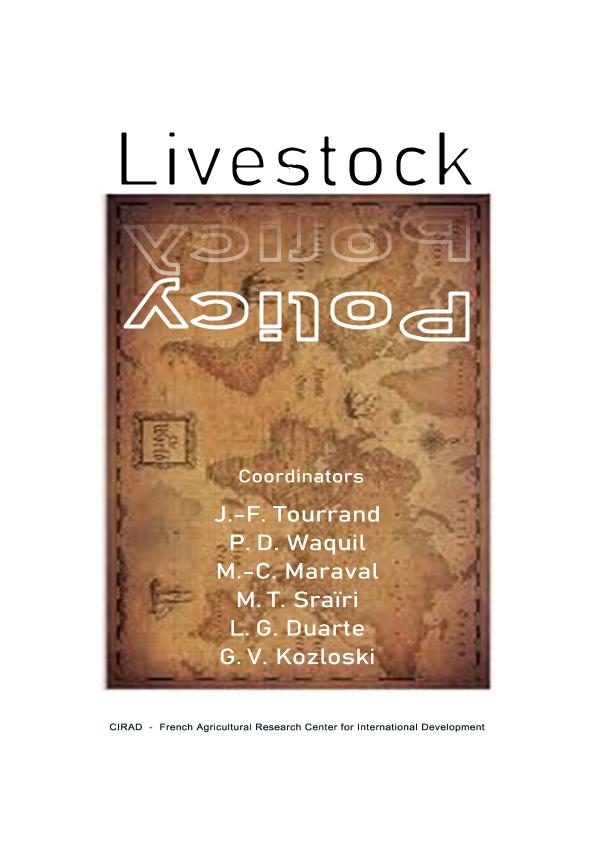Mostrar el registro sencillo del ítem
dc.contributor.author
Coronato, Fernando Raul

dc.contributor.author
Tourrand, Jean Francois

dc.contributor.other
Tourrand, Jean Francois

dc.contributor.other
Waquil, Paulo
dc.contributor.other
Maraval, Marie Cécile
dc.contributor.other
Sraïri, Mohamed Taher
dc.contributor.other
Duarte, Laura Graciela

dc.contributor.other
Kozloski, G. V.
dc.date.available
2022-09-19T11:01:18Z
dc.date.issued
2020
dc.identifier.citation
Coronato, Fernando Raul; Tourrand, Jean Francois; Sheep policy in the colonization of Argentine Patagonia; Centre de Coopération Internationale en Recherche Agronomique pour le Développerment; 2020; 67-78
dc.identifier.isbn
978-2-87614-762-1
dc.identifier.uri
http://hdl.handle.net/11336/169225
dc.description.abstract
In the second half of the 19th century, Europe imported raw materials to support the growth of its industry, which in turn produced a demographic surplus. The countries of the Southern Cone were part of this globalized system as suppliers of commodities and receivers of migrants and capital. In the midst of the process of building its territory, Argentina led from 1879 to 1884 a military campaign that evicted the Amerindians from Patagonia, according to the classic process of border expansion. After the indigenous population was decimated, Patagonia was colonized by sheep moving southward from the plains of the pampas, and northward from the Falkland Islands. The national division of labor allocated the fertile pampas to cereals and cattle, and Patagonia to sheep rearing. Thus, on the vast arid plateaus, where a few Native American tribes remained, sheep eventually thrived despite predators such as pumas and foxes. Above and beyond, it was necessary to occupy rapidly the territory to coun‐ ter the Chilean expansionist vision. Patagonian rangelands had a low‐carrying capacity of at most one sheep per hectare. These figures were largely overestimated, both by the legislators and the first breeders, whose references were those of the pampas and the Falklands, where rainfall levels were three to four times higher. A century later, the result of colonization by sheep is a serious degradation of the rangelands on almost two thirds of the territory, with many abandoned farms. The number of sheep reached a peak of 22 million around 1950 and declined regularly since then. As a result, the Patagonian ecosystem is a large demo‐ graphic void with less than one inhabitant per square kilometer; the population is con‐ centrated in very few urban centers
dc.format
application/pdf
dc.language.iso
eng
dc.publisher
Centre de Coopération Internationale en Recherche Agronomique pour le Développerment
dc.rights
info:eu-repo/semantics/openAccess
dc.rights.uri
https://creativecommons.org/licenses/by/2.5/ar/
dc.subject
TERRITORY
dc.subject
SHEEPHERDS
dc.subject
GEOPOLITICS
dc.subject
DESERTIFICATION
dc.subject.classification
Ganadería

dc.subject.classification
Producción Animal y Lechería

dc.subject.classification
CIENCIAS AGRÍCOLAS

dc.title
Sheep policy in the colonization of Argentine Patagonia
dc.type
info:eu-repo/semantics/publishedVersion
dc.type
info:eu-repo/semantics/bookPart
dc.type
info:ar-repo/semantics/parte de libro
dc.date.updated
2022-07-04T19:19:07Z
dc.journal.pagination
67-78
dc.journal.pais
Francia

dc.journal.ciudad
Montpellier
dc.description.fil
Fil: Coronato, Fernando Raul. Consejo Nacional de Investigaciones Científicas y Técnicas. Centro Científico Tecnológico Conicet - Centro Nacional Patagónico. Instituto Patagónico para el Estudio de los Ecosistemas Continentales; Argentina
dc.description.fil
Fil: Tourrand, Jean Francois. Centre de Coopération Internationale en Recherche Agronomique pour le Développerment; Francia
dc.relation.alternativeid
info:eu-repo/semantics/altIdentifier/url/https://agritrop.cirad.fr/597324/
dc.conicet.paginas
276
dc.source.titulo
Livestock policy
Archivos asociados
